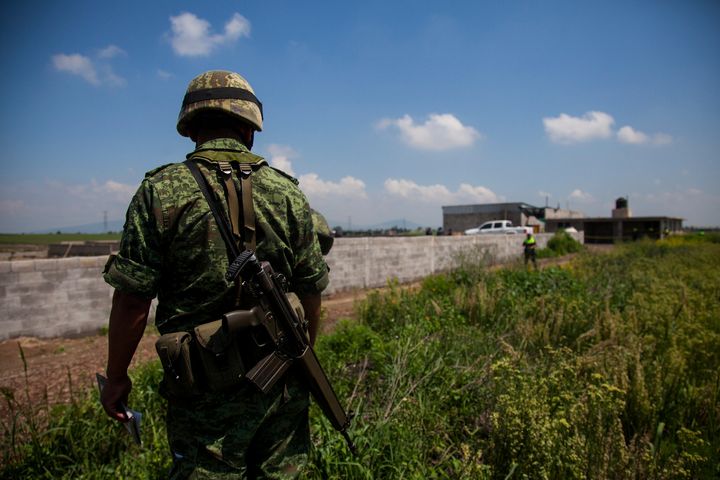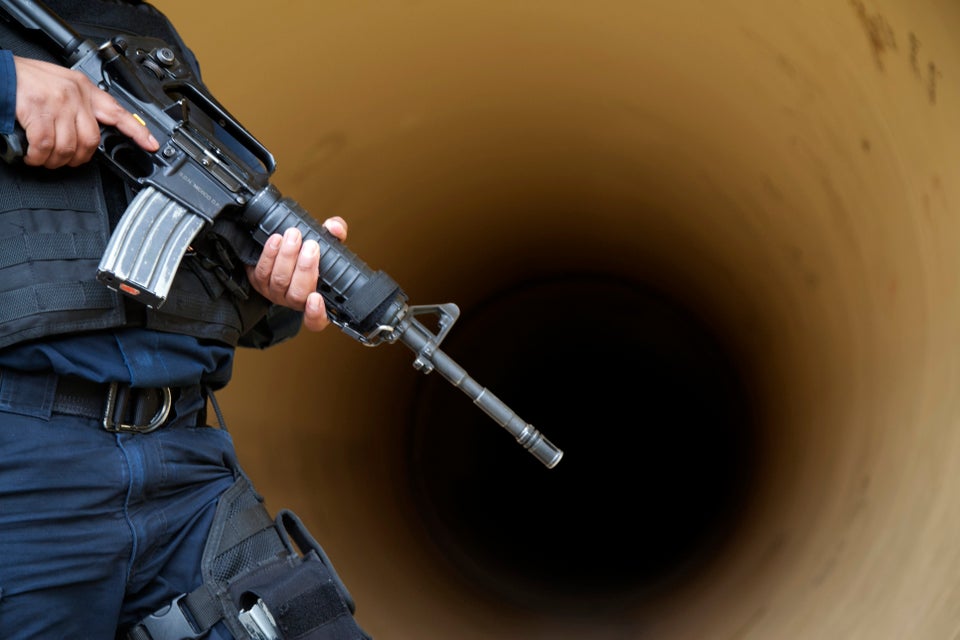
Every week, we bring you one overlooked aspect of the stories that made news in recent days. You noticed the media forgot all about another story's basic facts? Tweet @TheWorldPost or let us know on our Facebook page.
Joaquin "El Chapo" Guzman Loera, once described as the world’s most powerful drug trafficker, broke out of a Mexican prison last Saturday, disappearing down a shaft in his cell and tunneling to freedom.
The tunnel appears to be the work of many hands, over many months. A mile long and high enough for the kingpin to walk upright, the tunnel included lighting, ventilation and a motorcycle on rails. Authorities estimate it would have taken at least 18 months to build the tunnel, and that it involved the removal of over 300 truckloads' worth of dirt.
Guzman’s method of escape was audacious, but perhaps it shouldn’t have come as a surprise, given his history. Guzman presides over the powerful Sinaloa drug cartel, and is credited with commissioning the very first drug smuggling tunnel under the Mexico-U.S. border in the late 1980s. The cartel and its competitors went on to build a vast network of tunnels, through which billions of dollars’ worth of drugs are brought into the U.S. each year. U.S. authorities have discovered more than 100 such tunnels under the border, some equipped with lighting, ventilation and even rail systems.
Guzman also used his tunneling expertise to evade authorities after an earlier prison break in 2001. (That time, allegedly, the kingpin left the grounds hidden in a laundry basket.) After years of hunting the drug lord, Mexican forces closed in on Guzman in February 2014 with the help of U.S. surveillance. But Guzman narrowly escaped their clutches by slipping under his bathtub into an extensive tunnel network that linked his safe houses.
Guzman was finally caught in the resort town of Mazatlan a week later, bringing an end to his 13 years at large. He was reportedly captured without a single shot being fired, fueling a plethora of conspiracy theories.
Guzman was locked up in a maximum security facility, and Mexican officials pledged that he would never slip through their fingers again. Yet experts believe that the construction of his next escape tunnel likely began almost as soon as he arrived at the prison.
Many find it hard to believe the kingpin could have pulled off such a massive escape ― especially, given his history, one that involved tunnels ― without the complicity of authorities.
“The people who worked on the construction of the tunnel took their time to do it, calmly, with no worries, apparently,” Mexican security analyst Eduardo Guerrero told The New York Times this week. “Chapo’s escape is spectacular as a blatant example of the corruption and complicity inside the prison system.”
Joaquin “El Chapo” Guzman is escorted by Mexican navy marines in Mexico City, Feb. 22, 2014.
As the manhunt for Guzman continues, more than 40 staff members at the prison have been questioned. The head of the prison, the police intelligence chief and several other prison officials have lost their jobs.
The jailbreak confirmed the worst fears of American authorities, who unsuccessfully sought to extradite Guzman last year to face charges in the U.S. In fact, the U.S. Drug Enforcement Administration was aware as early as March 2014 that Guzman and his associates were plotting an escape, according to documents obtained by the Associated Press. Mexico denied this week that U.S. authorities had informed them of Guzman’s escape plans.
Guzman’s son Ivan ― who has taken the reins of the cartel, and who hired a team of experts to plan his father’s jailbreak, according to the DEA documents ― had dropped hints about the plot in recent weeks, not very subtly. “I promise you, the general will soon be back,” he wrote on Twitter in May, as Patrick Radden Keefe points out in The New Yorker. A few days before Guzman vanished, his son tweeted: “Everything comes to those who know how to wait.”
More from The WorldPost’s Forgotten Fact Series:
- Brazil Released Its Own Torture Report And The U.S. Is Implicated
- How Boko Haram Has Left Northeast Nigeria In Ruins
- This War Is Dramatically Escalating, But Remains Hidden From View
- The Fight Against Beijing You Probably Never Heard About
Related on HuffPost:

